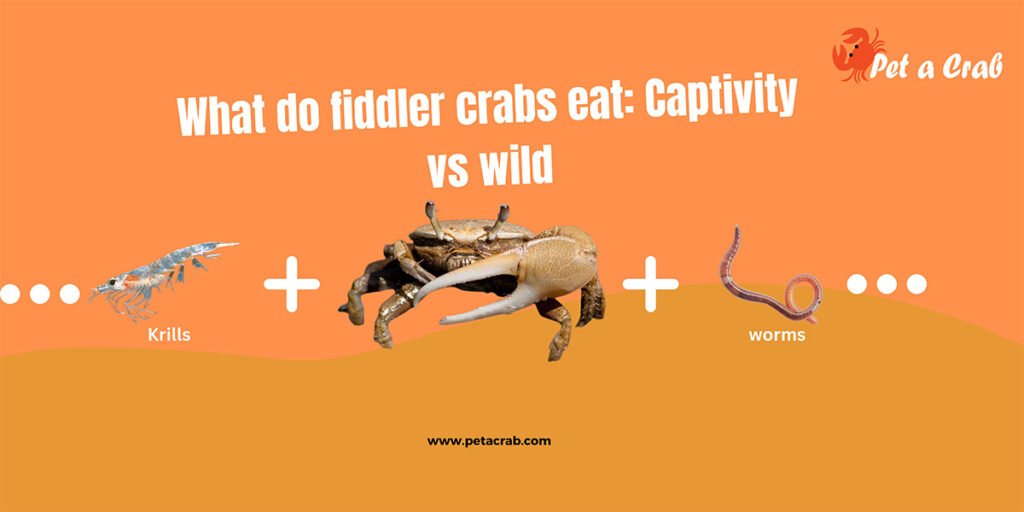The calico crab, one of the breathtaking species of the ocean that can be a great pet in your aquarium. Since they are not a popular species in the aquarium trade, you will rarely find any information about them. They are easy-care species with some exceptions you need to be aware of.
Here you will learn everything about the calico crab, including feeding, tank setup and interesting facts. Let’s jump into the topic.
Quick overview of calico crab
| Common names | Calico Crab, Dolly Varden Crab, Calico Box Crab, Gulf Calico Crab |
| Scientific name | Hepatus Epheliticus |
| Size | About 3 inches (7.6 cm) |
| Lifespan | Around 3 years |
| Color | Yellow, orange, dark red |
| Sleeping nature | Nocturnal |
| Diet | Omnivore/carnivore |
| Habitate type | Marine |
| Temperament | Peaceful |
| Optimal temperature | 72-78°F (22-26°C) |
Interesting facts about calico crab
Where do Calico crabs live? (habitat and distribution)
Calico crabs (Hepatus epheliticus) are commonly found along the coasts of Southwest Florida and the Gulf Coast, where they thrive in shallow waters. Their distribution extends throughout the western Atlantic Ocean, ranging from the Chesapeake Bay all the way down to the Dominican Republic.
This wide geographical range also includes areas like Cuba, Jamaica, and the western Bay of Campeche, Mexico. These crabs are well-adapted to varying marine environments across this broad stretch of coastline. Preferring sandy and muddy substrates, Calico crabs typically reside at depths of up to 46 meters (151 feet) below the surface.

Appearance of dolly varden crab
Calico crabs are renowned for their striking and colorful appearance, making them a favorite among aquarists. These small crabs typically measure two to four inches across their carapace, which is predominantly white. What sets them apart are the large, vibrant spots that range from orange to red and are often outlined in darker colors, creating a captivating mosaic effect. This unique pattern not only enhances their beauty but also aids in camouflage against the sea floor, allowing them to blend seamlessly into their surroundings.
The rounded shape of calico crabs’ shells complements their overall appearance, while their specialized claws can form a protective shield over their faces, showcasing their unique anatomical adaptations.
Furthermore, the gender of Calico crabs can be identified by the shape of their abdomen. Mature males exhibit a narrow, elongated apron, while females possess a broader, convex apron.
Behavior of calico box crab
Calico crabs primarily spend much of their time buried in the sand bed, often with only their eyes exposed. This behavior serves as an effective defense mechanism, allowing them to remain hidden from potential predators while also providing them with a comfortable habitat. Preferring darker environments, Calico crabs shy away from bright light and are more active at night when they emerge to scavenge for food.
While Calico crabs can defend themselves with their claws, they are generally not aggressive and will only attack if provoked. Experts recommend against handling or picking them up to avoid stress for the crab and potential injury for the handler.
In a unique display of behavior, Calico crabs occasionally pick up pink cloak anemones and attach them to their shells. This symbiotic relationship offers them added camouflage, making it even harder for predators to spot them.
Are Calico crabs reef safe? (Hepatus epheliticus)
Calico crabs are not considered reef-safe. While they are generally peaceful and can help maintain water quality, they have a tendency to eat smaller reef organisms like shrimp or clams. This makes them a risky addition to a reef tank, as they could disrupt the delicate balance of your reef ecosystem.
Note: Previously, many aquarists successfully kept them in reef tanks without any problem.
Are the calico crabs poisonous?
I couldn’t find any information regarding their toxicity. This uncertainty prevents me from determining whether they are poisonous. However, their color and pattern indicate they are somehow toxic.
Is calico crab edible?
Can you eat calico crabs? The calico crab (Hepatus epheliticus) is not commonly eaten and is generally not recommended for consumption. Should you choose to consume them, exercise caution. You must be cautious about eating toxic crabs, as most of their toxicity remains after cooking.
Some same looking species worth knowing
Other crab species that named after an animal
Calico crab care
Tank setup for hepatus epheliticus
What tank size does a calico crab need?
Calico crabs will need a lot of space to thrive. Take a minimum 20- or 30- gallon tank with a lid. If you are planning to make a fully functional marine environment with fish and corals, then increase the size accordingly.
Substrate
Choose a sandy substrate like aragonite reef sand and fix it with crushed gravel. Make the substrate 2-3 inches so that they can burrow and hide in the substrate.

Decoration
Place one or two hiding places or some aquarium stones so that they can hide during the day. Bring some anemones and corals if you feel like it, considering the calico crabs may destroy them. Add other equipment like a sponge filter and thermometer.
Water parameter
To properly acclimate calico crabs, it’s best to start by floating them in a sump or low-light area of the tank for 15-20 minutes to match the temperature. Afterward, a slow drip acclimation process is recommended. This method helps them adjust to the water conditions gradually, reducing stress and improving their chances of adapting successfully to the aquarium environment.
It’s important to maintain stable water parameters. The ideal temperature range is 72-78°F (22-26°C), with a pH between 8.1 and 8.4 and a specific gravity of 1.023-1.025. Calico crabs are sensitive to changes in water conditions, so any fluctuations can be harmful.
Do calico crabs molt?
Calico crabs undergo molting, as do all other types of crabs. They need to molt to get bigger and stronger. This process is frequent when they are young; the time between molting increases as they grow and become 20% bigger as they molt.
To help them develop a strong shell, feed them food high in calcium like cuttlebone, and do not disturb them while they molt.
Calico crab tank mates
They are peaceful and don’t like to tease other fish. They’ll do their stuff and eat algae living in the bottom. However, since they are crabs, they might try to eat fish, though the chance is very low.
They should be well-fed to reduce aggression. You can keep them with usual aquarium fish and crustaceans, such as lionfish, gobies, blennies, gaudy clown crabs, and starfish.
Note: Calico crabs are often eaten by sea turtles and large fish like Goliath groupers and bass fish.
Calico crab diet/eating
Calico crabs (Hepatus epheliticus) are opportunistic scavengers, primarily carnivorous in nature. In the wild, their diet includes various small animals, dead plants, and fish. They forage along the sea floor, consuming whatever they can find, including worms, clams, and other invertebrates. This behavior sustains them and contributes to keeping the ocean floor clean by removing detritus and other organic matter.
In aquarium settings, calico crabs help maintain water quality by feeding on algae, detritus, and leftover fish food. They can also be offered more substantial food, such as silversides, squid, and clams. For variety, aquarists often provide seaweed or algae wafers to supplement their diet, ensuring they get both plant- and animal-based nutrients. Though primarily carnivores, they exhibit omnivorous tendencies when scavenging for food, making them versatile feeders in captivity.
Frequently asked questions
Are calico box crabs rare?
Calico box crabs (Hepatus epheliticus) aren’t considered rare in the wild. They’re fairly common across the Gulf of Mexico and western Atlantic but rarely seen in aquariums, which makes them seem rare in the pet trade.
How big do calico crabs get?
Calico crabs typically grow up to 3–4 inches (about 7.6–10 cm) across their carapace. Their compact size makes them manageable in larger marine tanks with sandy substrate.
Do calico crabs bite?
Unlike some aggressive crab species, calico crabs don’t bite humans; instead, they primarily use their claws for defense and scavenging, not for attacking. However, like all crabs, they can pinch if handled, so it’s best to avoid picking them up.


